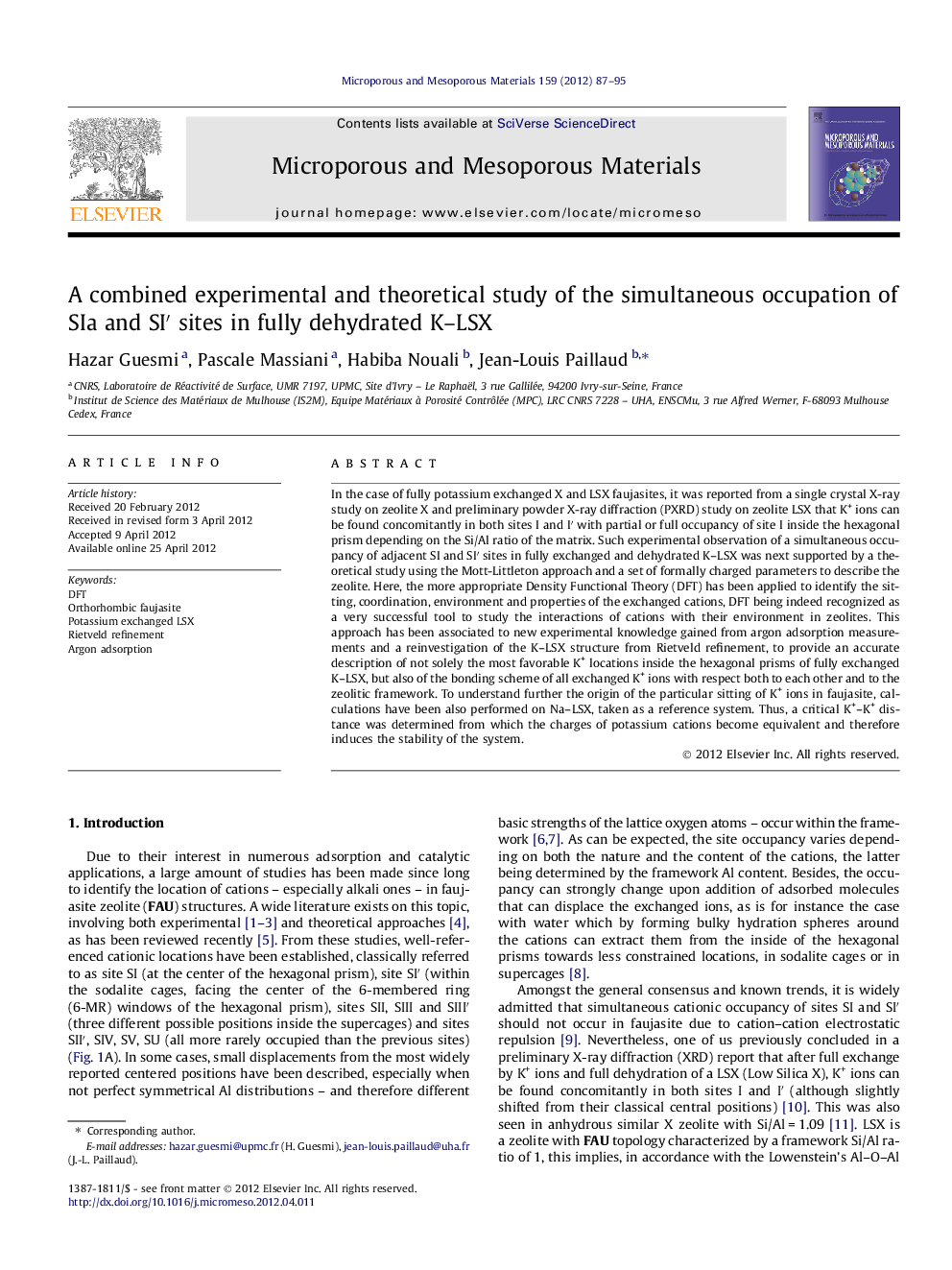| Article ID | Journal | Published Year | Pages | File Type |
|---|---|---|---|---|
| 74164 | Microporous and Mesoporous Materials | 2012 | 9 Pages |
In the case of fully potassium exchanged X and LSX faujasites, it was reported from a single crystal X-ray study on zeolite X and preliminary powder X-ray diffraction (PXRD) study on zeolite LSX that K+ ions can be found concomitantly in both sites I and I′ with partial or full occupancy of site I inside the hexagonal prism depending on the Si/Al ratio of the matrix. Such experimental observation of a simultaneous occupancy of adjacent SI and SI′ sites in fully exchanged and dehydrated K–LSX was next supported by a theoretical study using the Mott-Littleton approach and a set of formally charged parameters to describe the zeolite. Here, the more appropriate Density Functional Theory (DFT) has been applied to identify the sitting, coordination, environment and properties of the exchanged cations, DFT being indeed recognized as a very successful tool to study the interactions of cations with their environment in zeolites. This approach has been associated to new experimental knowledge gained from argon adsorption measurements and a reinvestigation of the K–LSX structure from Rietveld refinement, to provide an accurate description of not solely the most favorable K+ locations inside the hexagonal prisms of fully exchanged K–LSX, but also of the bonding scheme of all exchanged K+ ions with respect both to each other and to the zeolitic framework. To understand further the origin of the particular sitting of K+ ions in faujasite, calculations have been also performed on Na–LSX, taken as a reference system. Thus, a critical K+–K+ distance was determined from which the charges of potassium cations become equivalent and therefore induces the stability of the system.
Graphical abstractFigure optionsDownload full-size imageDownload as PowerPoint slideHighlights► All the counter potassium cations have been located in orthorhombic K–LSX zeolite. ► Some argon molecules have been located inside the supercages near the SV sites. ► Density Functional Theory (DFT) calculations corroborate the structural study. ► Simultaneous SIa–SI′ occupancy is explained by comparing DFT calculations on Na–LSX. ► The short K+–K+ distances correspond to equivalent charge of all cations.
